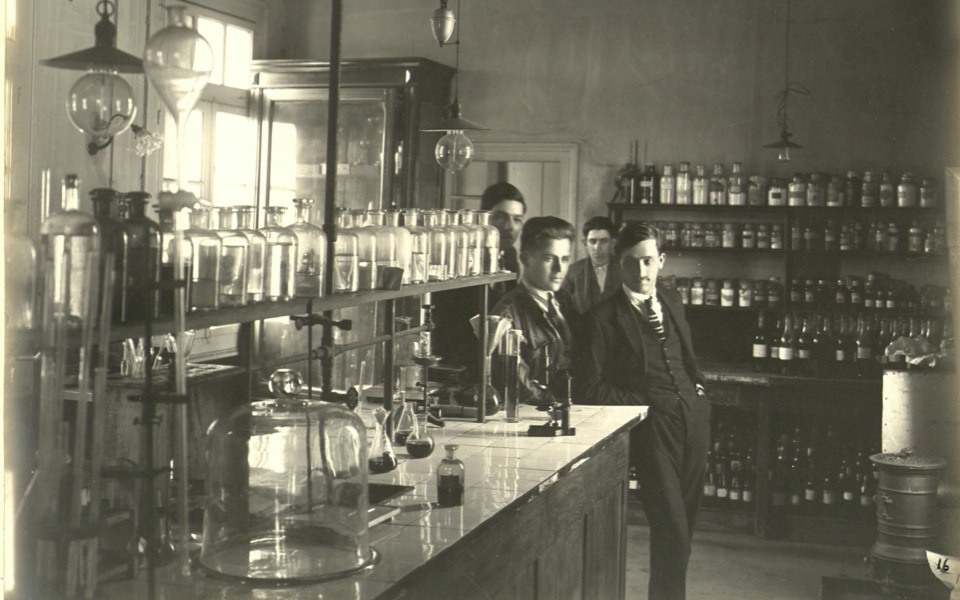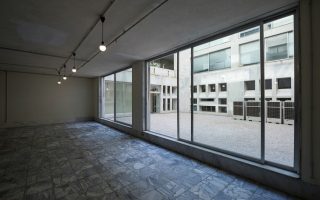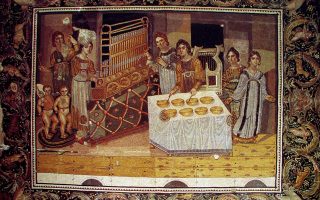A fascinating tale of men and factories

In the late 19th and early 20th century, the University of Zurich turned out a handful of charismatic and enlightened Greek alumni who returned to Greece permanently and tried to implement the bold reforms introduced by statesman Harilaos Trikoupis. Armed with great courage and a solid education and know-how, they built the country’s first big industries with an eye to a broader development strategy and the export market.
Their foresight allowed them to create supply even before there was demand: fortified concrete, for example, appeared at a time when Greeks were still building with almost primitive materials, while denatured alcohol quickly replaced petrol in lamps. These pioneers could see into the future and were ready to put their own money behind their vision, often driven by a sense of patriotism.
The Zurich Club, as they were later dubbed, built the country’s first industrial units in Elefsina, southwest of the Greek capital. Epameinondas Harilaos and Nikolaos Kanellopoulos founded the Elefsina Soap Factory and Olive Mill; Andreas Hadjikyriakos was the co-founder of Titan and owner of Heracles cement companies; eminent civil engineer Alexandros Zachariou served as production director at Titan; Leontios Economidis founded the alcohol-producing company later known as Vortys; engineer Pavlos Santorinis broke new ground in the construction of the Kronos alcohol production plant; and Menelaos Sakellariou created the Iris polish and paint factory. Notably, most of these entrepreneurs chose ancient Greek names for their businesses.
This small group, which also founded the Hellenic Federation of Enterprises (SEV) in 1907, later grew with the addition of other forward-thinking businessmen, such as Yiannis Latsis, Stavros Niarchos, Prodromos Bodosakis and the Angelopoulos family, who turned Elefsina into a major industrial hub.
The site where the initiates of the Eleusinian Mysteries once trod, became home to production lines employing thousands of workers, while the selection of the area was dictated by the fact that it had a port, a railway network and was ideally located between the Peloponnese and mainland Greece.
The fascinating story of these men and the region’s development into an industrial hub is outlined with a wealth of audiovisual material in the exhibition “Industrial Elefsina: Men and Factories,” which runs until November 15 at the Old Olive Mill’s Administration Office on the town’s waterfront. Valuable artifacts from the area’s biggest plants are displayed alongside documents and narratives by workers. All that remains of many of these erstwhile plants today is little more than a shell; however, some of the units have grown and survived to this day. The exhibition also offers valuable insight into an aspect of industry that is often overlooked in Greece, where the focus tends to be on the labor movement, by putting the spotlight on the pioneers. It is also the first public event to be organized by the Georgios Ambatzoglou Museum of Elefsina’s Modern History, a new institution whose initial committee is headed by Kalliopi Papangeli, an archaeologist who was instrumental in the work done by the Elefsina archaeological service. She was responsible for collecting and organizing most of the material that is on display, while the exhibition was designed by museologist Erato Koutsoudaki.
The show
The first display at the entrance of the venue consists of the portraits of the Zurich Club industrialists, shown in mirrors.
“We wanted to use this exhibition as an opportunity to address the importance of labor and entrepreneurship,” says Koutsoudaki, who has designed the exhibition over two floors, with each section showcasing a different factory.
“In the past few decades we seem to have lost our sense of moderation in regards to what it means to be an employer, a unionist or a worker, and this exhibition helps shed light on chapters of this interconnected history that have been lost,” she says.
The material was collected via on-site visits to the factories and with the help of two collectors – Costas Lykidis and Giorgos Pavlopoulos – who have amassed a treasure trove of important documentary evidence on the area’s industrial history.
Material was also donated by Elefsina Shipyards (scale models), Halyvourgiki steel mills (materials and products) and Pyrkal defense industries. Photographer Yiorgis Yerlolymbos has also made a significant contribution with photographs of the plants in their present state.
“Our aim was also to reach out to the local community of Elefsina. The number of people who supported the endeavor by offering their own stories and relevant items was really very touching,” adds Koutsoudaki.
The exhibition runs to November 15, Tuesdays-Fridays 9 a.m. to 1 p.m., Saturdays 7 to 10 p.m., and Sundays 9 a.m. to 1 p.m. and 7 to 10 p.m.Admission is free of charge.





